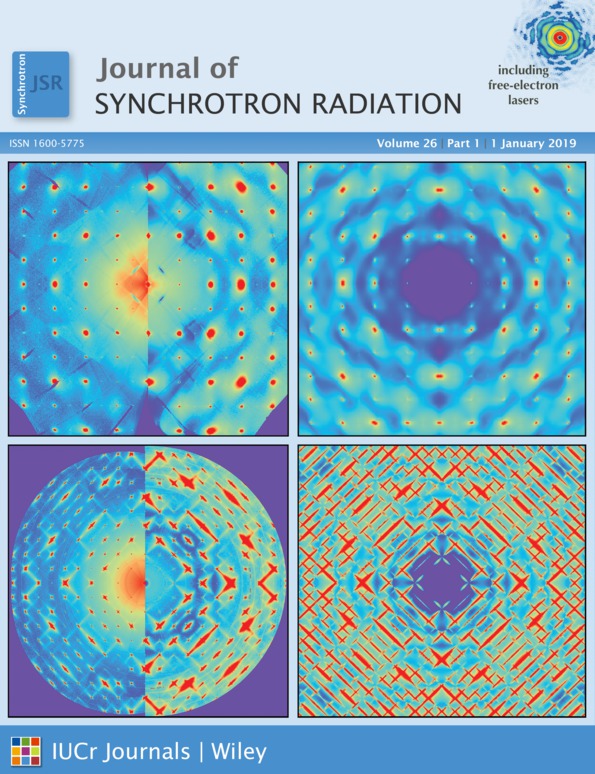Live-pig-airway surface imaging and whole-pig CT at the Australian Synchrotron Imaging and Medical Beamline
Abstract
The Australian Synchrotron Imaging and Medical Beamline (IMBL) was designed to be the world's widest synchrotron X-ray beam, partly to enable clinical imaging and therapeutic applications for humans, as well as for imaging large-animal models. Our group is currently interested in imaging the airways of newly developed cystic fibrosis (CF) animal models that display human-like lung disease, such as the CF pig. One key outcome measure for assessing the effectiveness of CF airway therapies is the ability of the lung to clear inhaled particulates by mucociliary transit (MCT). This study extends the ex vivo sheep and pig tracheal-tissue studies previously performed by the authors at the IMBL. In the present study, attempts were made to determine whether the design of the IMBL is suitable for imaging tracheal MCT in live pigs. The movement of 200 µm-diameter high-refractive-index (HRI) glass-bead marker particles deposited onto the tracheal airway surface of eight live piglets was tracked and quantified and the MCT response to aerosol delivery was examined. A high-resolution computed tomographic (CT) whole-animal post-mortem scan of one pig was also performed to verify the large sample CT capabilities of the IMBL. MCT tracking particles were visible in all animals, and the automated MCT tracking algorithms used were able to identify and track many particles, but accuracy was reduced when particles moved faster than ∼6 mm min−1 (50 pixels between exposures), or when the particles touched or overlapped. Renderings were successfully made from the CT data set. Technical issues prevented use of reliable shuttering and hence radiation doses were variable. Since dose must be carefully controlled in future studies, estimates of the minimum achievable radiation doses using this experiment design are shown. In summary, this study demonstrated the suitability of the IMBL for large-animal tracheal MCT imaging, and for whole-animal CT.




